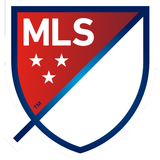
MLS 101: How does free agency work?
MLS entered new territory on Tuesday afternoon as the first crop of free agents officially hit the market.
For the first time in 20 years, several players now boast the right to negotiate a new contract with any team in the league and selected their destination for the upcoming year.
It is a considerable change to the way MLS -- a league predicated on assigning the rights of its players at all times to avoid competition between its clubs -- operates during the offseason.
With the first class now trying to sort through this new reality, here is a look at the parameters in place and the practical impact of the new structure:
Is MLS free agency like free agency in other sports?
MLS FREE AGENTS
| PLAYER |
FORMER CLUB |
| Corey Ashe | Orlando City |
| Eric Avila |
Orlando City |
| Chad Barrett | Seattle Sounders |
| Bobby Burling | Colorado Rapids |
| Edson Buddle | LA Galaxy |
| Jon Busch | Chicago Fire |
| Brian Carroll | Philadelphia Union |
| Conor Casey | Philadelphia Union |
| Ricardo Clark | Houston Dynamo |
| Kenny Cooper | Montréal Impact |
| Alan Gordon |
LA Galaxy |
| Ned Grabavoy | New York City FC |
| Ty Harden |
Chicago Fire |
| Michael Harrington | Colorado Rapids |
| Stephen Keel | FC Dallas |
| Nick Labrocca |
Colorado Rapids |
| Jeff Larentowicz |
Chicago Fire |
| Mike Magee | Chicago Fire |
| Justin Mapp | Montréal Impact |
| Drew Moor | Colorado Rapids |
| Paulo Nagamura |
Sporting Kansas City |
| Troy Perkins |
Seattle Sounders |
| Kyle Reynish |
New York Red Bulls |
| James Riley | Colorado Rapids |
| Nathan Sturgis |
Houston Dynamo |
| Andrew Weber | Portland Timbers |
No, not particularly. Most leagues have more developed and less restrictive ways of allowing players to obtain free agency rights. There is one shared tenet, though: It takes more than an expiring contract to qualify for free agency.
OK, how do players earn free agent status?
Players must meet three specific qualifications: (1) they are either out-of-contract or their current club opted to decline their contractual option for next year; (2) they are at least 28 years old; and (3) they have accrued at least eight years of service as an MLS player.
Those restrictions are pretty onerous, aren’t they?
Correct. MLS and the MLS Players Union agreed to these terms as part of the Collective Bargaining Agreement reached earlier this year. MLSPU conceded in some important areas -- including the salary budget -- to achieve free agency, even in this modest form. MLS is the first major sports league in the United States to adopt any form of free agency unilaterally. Its mere existence counts as a significant fillip for MLSPU.
So why did the players prioritize free agency during those CBA negotiations?
There were two primary reasons: (1) the introduction of free agency paves the way for further strides down the line -- it is now a part of the infrastructure of the league; and (2) it provides players with the freedom to choose where they want to play, which constitutes a considerable step forward from a quality of life perspective.
How many players actually fall under the criteria this year?
There are 26 free agents in the inaugural class.
What can they expect on the open market?
Difficult decisions. Most MLS teams face salary budget issues after the modest increase implemented by the new CBA. The 2016 salary budget is set at $3.66 million per team (this is a soft number augmented by allocation money and other mechanisms). The players involved in this free agency class are likely to garner comparatively modest offers -- several of them are likely to face wage cuts, for example -- as teams try to horde resources.
The state of the market leaves players to sift through their options and weigh their priorities. Is salary the primary motivation? Or is it worth taking a more severe pay cut to play in a more desirable location? For the first time, the entire decision-making process is within their control.
Are there any limitations in terms of salary or term to the eventual contract offer?
Yes. Clubs are free to structure the deals as they please, but they cannot offer a player more than a standard percentage raise from their previous salary.
The maximum raises -- based on previous salaries -- are outlined here:
25 percent: < $100k
20 percent: $100k-$200k
15 percent: > $200k
If an out-of-contract player does not qualify for free agency, then what are his options?
If the player does not satisfy the free agency criteria, then they are placed in the re-entry process (if they qualify) or the waiver draft (if they do not).
Players must satisfy one of two conditions in order to qualify for the re-entry process: (1) they are at least 23 years old and have a minimum of three years of MLS experience after a club declines their contract option -- they are available in the first stage for their option salary; and (2) they are at least 25 years old and have a minimum of four years of MLS experience after their contract expires -- they are available in the first stage for their 2015 salary.
Is there anything else worth noting?
As you would expect, out-of-contract players are free to sign anywhere in the world. Their contracts are expired. If they want to play in Europe or sign with a NASL team, then they are free to do so.
